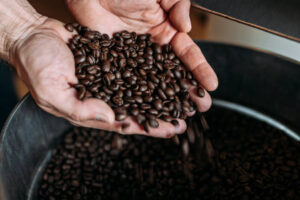A velvety foam cap, a burst of rich espresso, and the comforting warmth of steamed milk—cappuccino coffee is more than just a drink; it’s an experience. This beloved Italian beverage has captured the hearts of coffee aficionados around the globe. Whether you’re a seasoned coffee lover or a curious newcomer, there’s always more to learn about this classic brew. In this blog post, we’ll unravel the mysteries of cappuccino coffee, from its origins to how you can create the perfect cup at home. Get ready to elevate your coffee game to new heights.
The Origins of Cappuccino Coffee
Cappuccino has a rich history that dates back to the early 20th century in Italy. The name “cappuccino” is derived from the Capuchin friars, whose brown robes resembled the color of the coffee when mixed with milk. Over time, cappuccino evolved from a simple morning beverage to a staple in cafes around the world.
The popularity of cappuccino grew exponentially after World War II, as espresso machines became more widespread. This allowed for the creation of the perfect balance of espresso, steamed milk, and frothy foam that we know and love today.
In Italy, cappuccino is traditionally enjoyed in the morning, often paired with a pastry. However, its appeal has transcended cultural boundaries, making it a favorite at any time of the day.
What Makes a Cappuccino Unique?
A cappuccino stands out from other coffee beverages due to its unique composition. The drink is typically made up of equal parts espresso, steamed milk, and milk foam. This balance creates a harmonious blend of strong coffee flavor and creamy texture.
The key to a perfect cappuccino lies in the preparation. The espresso shot provides a rich, robust base, while the steamed milk adds a smooth, velvety mouthfeel. The crowning glory is the milk foam, which should be thick enough to hold its shape but light enough to melt in your mouth.
The art of making a cappuccino also involves precise timing and temperature control. The espresso must be brewed at the right temperature and pressure to extract the optimal flavor, while the milk must be steamed to the perfect consistency without scalding.
The Art of Frothing Milk
Frothing milk is a crucial skill for making a great cappuccino. The goal is to create a microfoam—a velvety texture with tiny air bubbles that blend seamlessly with the coffee.
Start by choosing the right milk. Whole milk is preferred for frothing because of its higher fat content, which results in a creamier foam. However, alternatives like almond, soy, or oat milk can also be frothed, though they may require different techniques.
To froth the milk, use a steam wand attached to an espresso machine. Keep the tip of the steam wand just below the surface of the milk and turn it on. Allow the milk to expand as air is incorporated, then submerge the wand deeper to heat the milk evenly. The ideal temperature for steamed milk is around 150°F (65°C).
Once frothed, tap the milk pitcher on the counter to remove any large bubbles and swirl it to create a smooth, glossy texture. Pour the steamed milk into the espresso, letting the foam float on top.
Creating the Perfect Espresso Shot
The foundation of a cappuccino is a well-extracted espresso shot. Achieving this requires attention to detail and practice.
Start with freshly ground coffee beans. The grind size should be fine, similar to table salt, to ensure proper extraction. Use a quality burr grinder for consistent results.
Next, measure the right amount of coffee. A standard espresso shot requires about 18-20 grams of coffee grounds. Distribute the grounds evenly in the portafilter and tamp them down firmly to create a level surface.
Attach the portafilter to the espresso machine and start the extraction process. The ideal shot time is between 25-30 seconds, producing a rich, golden-brown crema on top. If the shot takes too long or too short, adjust the grind size or tamping pressure accordingly.
Choosing the Right Coffee Beans
The type of coffee beans you use can significantly impact the flavor of your cappuccino. While personal preference plays a role, certain characteristics are generally desirable.
Look for beans with a medium to dark roast. These roasts offer a balanced flavor profile with rich, chocolatey notes that complement the milk’s sweetness. Single-origin beans can provide unique flavors, while blends offer a more consistent taste.
Freshness is also crucial. Coffee beans start to lose their flavor soon after roasting, so try to use beans within a few weeks of their roast date. Store them in an airtight container away from light, heat, and moisture.
Experiment with different beans to find the ones that best suit your taste. Remember, the quality of your espresso shot directly influences the final cappuccino.
The Role of Temperature and Timing
Temperature and timing are critical factors in making a superior cappuccino. Both the espresso and the milk must be prepared at the right temperatures to achieve the desired flavors and textures.
For espresso, the water temperature should be between 195°F and 205°F (90°C to 96°C) to extract the optimal flavors without bitterness. The extraction time, as mentioned earlier, should be around 25-30 seconds.
Steamed milk should be heated to about 150°F (65°C). Overheating can cause the milk to burn, resulting in an unpleasant taste. Use a thermometer to monitor the temperature until you become proficient at judging it by touch.
The timing of combining the espresso and milk is also essential. Ideally, pour the milk into the espresso immediately after steaming to maintain the perfect temperature and texture.
The Importance of Equipment
Investing in good quality equipment can make a significant difference in your cappuccino-making experience. While professional-grade machines can be expensive, there are more affordable options that still deliver excellent results.
A reliable espresso machine with a built-in steam wand is a worthwhile investment for any coffee enthusiast. Look for machines with consistent temperature control and adjustable settings to fine-tune your espresso shots.
A burr grinder is also essential for achieving the right grind size and consistency. Unlike blade grinders, burr grinders crush the beans evenly, ensuring a uniform extraction.
Other useful tools include a milk frothing pitcher, tamper, and digital thermometer. These items may seem minor, but they contribute to the precision and quality of your cappuccino.
Exploring Cappuccino Variations
While the classic cappuccino is a delight in itself, there are several variations to explore. Each offers a unique twist on the traditional recipe, catering to different tastes and preferences.
One popular variation is the flavored cappuccino. By adding syrups like vanilla, caramel, or hazelnut, you can introduce new dimensions of sweetness and aroma to your drink. These syrups can be mixed with the espresso before adding the steamed milk.
Another option is the iced cappuccino, perfect for hot summer days. Prepare your espresso and froth your milk as usual, then pour them over ice. This refreshing version maintains the rich flavors of a classic cappuccino while offering a cool and invigorating experience.
For those seeking a stronger coffee flavor, the dry cappuccino reduces the amount of steamed milk, allowing the espresso to shine. Conversely, a wet cappuccino increases the milk-to-foam ratio, resulting in a creamier, milder drink.
Pairing Your Cappuccino with Food
Pairing your cappuccino with the right food can enhance your overall experience. The rich, creamy texture and bold flavors of a cappuccino make it a versatile companion for various treats.
Pastries are a classic choice. Enjoy a buttery croissant, a sweet danish, or a flaky scone alongside your cappuccino for a delightful breakfast or snack. The combination of the pastry’s texture and the coffee’s warmth creates a harmonious balance.
For a more substantial pairing, consider savory options like quiches or sandwiches. The robust flavors of the cappuccino complement the savory ingredients, creating a satisfying meal.
Desserts are another excellent option. Indulge in a slice of tiramisu, a piece of chocolate cake, or a biscotti to elevate your coffee break. The sweetness of the dessert pairs beautifully with the cappuccino’s rich notes.
The Social Aspect of Cappuccino
Cappuccino has a social aspect that goes beyond its delicious taste. In many cultures, coffee is a central part of social interactions, and cappuccino is no exception.
In Italy, enjoying a cappuccino at a local cafe is a morning ritual for many. It’s a time to relax, catch up with friends, or read the newspaper. This tradition of savoring coffee in a social setting has spread worldwide, making cafes popular meeting spots.
Hosting a coffee gathering with friends or family can also be a delightful experience. Share your cappuccino-making skills, exchange tips, and enjoy each other’s company over a warm cup of coffee.
The communal aspect of cappuccino adds to its charm, fostering connections and creating memorable moments.
The Health Benefits of Cappuccino
Beyond its delightful flavor and social benefits, cappuccino offers several health advantages. When consumed in moderation, it can be a valuable addition to a balanced diet.
Cappuccino contains antioxidants, which help combat free radicals and reduce the risk of chronic diseases. The caffeine in espresso can boost mental alertness, improve concentration, and enhance physical performance.
The milk in cappuccino provides a source of calcium, vitamin D, and protein, contributing to bone health and muscle function. Choosing low-fat or plant-based milk can reduce calorie intake while still enjoying these benefits.
It’s important to note that adding excessive sugar or flavored syrups can negate some health benefits, so opt for natural sweeteners or enjoy your cappuccino with minimal additives.
FAQs About Cappuccino Coffee
What is the difference between a cappuccino and a latte?
A cappuccino has equal parts espresso, steamed milk, and milk foam, resulting in a balanced, creamy texture. A latte, on the other hand, has more steamed milk and less foam, creating a smoother, milkier drink.
Can I make a cappuccino without an espresso machine?
While an espresso machine is ideal, you can still make a cappuccino without one. Use a stovetop espresso maker or a strong brew of coffee as a substitute for the espresso shot. Heat and froth the milk using a microwave or stovetop and a hand-held frother or whisk.
How many calories are in a cappuccino?
The calorie content of a cappuccino depends on the type of milk used and any added sweeteners. A standard cappuccino with whole milk contains around 80-120 calories. Using low-fat or plant-based milk can reduce the calorie count.
Summary and Next Steps
Cappuccino coffee is more than just a morning pick-me-up; it’s an art form that combines rich flavors, creamy textures, and a touch of elegance. From its Italian origins to its global popularity, cappuccino has become a beloved beverage for coffee enthusiasts everywhere.
By understanding the key components, mastering the techniques, and exploring variations, you can elevate your cappuccino-making skills and enjoy this delightful drink to the fullest. Pair it with your favorite treats, share it with friends, and savor the moments of connection it brings.
Ready to take your cappuccino game to the next level? Invest in quality equipment, experiment with different beans, and join a community of coffee lovers to continue your journey. With each cup, you’ll discover new nuances and deepen your appreciation for this timeless beverage. Cheers to the perfect cappuccino!






